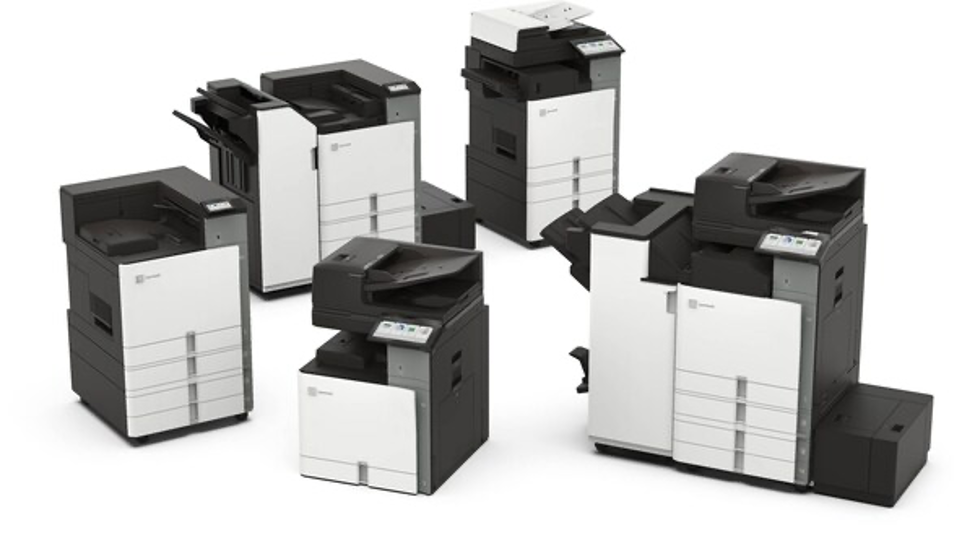The following appears on blogs.wsj.com
 The invention of the iPhone and iPad meant the decline, and eventual sale, of the consumer inkjet printing business for Lexmark International Inc. Over the past three years, Chief Financial Officer John Gamble has played a key role in reinventing the Lexington, Ky.-based company through strategic acquisitions and divestitures. He spoke with CFO Journal Editor Noelle Knox about Lexmark’s transition into a solution, services and software company.
The invention of the iPhone and iPad meant the decline, and eventual sale, of the consumer inkjet printing business for Lexmark International Inc. Over the past three years, Chief Financial Officer John Gamble has played a key role in reinventing the Lexington, Ky.-based company through strategic acquisitions and divestitures. He spoke with CFO Journal Editor Noelle Knox about Lexmark’s transition into a solution, services and software company.
Q: When did you see the writing on the wall?
![]() We started seeing the consumer print business declining quite some time ago (in 2007) and we started focusing our imaging business on managed print services (MPS) and the enterprise segment, which have much better market characteristics. Anheuser Busch, for example, is one of our MPS customers. We manage their print environment, which includes the printers and toner, as well as consulting services to improve effectiveness while minimizing costs.
We started seeing the consumer print business declining quite some time ago (in 2007) and we started focusing our imaging business on managed print services (MPS) and the enterprise segment, which have much better market characteristics. Anheuser Busch, for example, is one of our MPS customers. We manage their print environment, which includes the printers and toner, as well as consulting services to improve effectiveness while minimizing costs.
Q: Can you describe your evolution?
 We are becoming a solutions, services and software company that helps customers manage their unstructured information and unmanaged imaging device environment. Unstructured information is basically images that do not easily fit in the rows and columns of a structured database. For example, paper documents are a form of unstructured information. Today, documents are paper and electronic. We bought Perceptive Software in 2010 to extend our capabilities into content management and document workflow. With Perceptive, we can deliver a much more complete solution, enabling us to expand beyond our MPS offerings. Enterprise content management is both a stand-alone offering and an extension to our MPS offering.
We are becoming a solutions, services and software company that helps customers manage their unstructured information and unmanaged imaging device environment. Unstructured information is basically images that do not easily fit in the rows and columns of a structured database. For example, paper documents are a form of unstructured information. Today, documents are paper and electronic. We bought Perceptive Software in 2010 to extend our capabilities into content management and document workflow. With Perceptive, we can deliver a much more complete solution, enabling us to expand beyond our MPS offerings. Enterprise content management is both a stand-alone offering and an extension to our MPS offering.
We invested heavily internally to enhance our imaging hardware, printers and multifunction printers, and services capabilities. Growing our MPS capabilities and revenue is a key part of our strategy, and ensuring our software strategy supports MPS growth is key to our transition.
In terms of software, after Perceptive Software, we acquired Pallas Athena and Brainware. These two acquisitions were generally focused on transactional processes, such as management of invoices, accounts payable and receivable or bills of lading. A company receives lots of invoices, sometimes electronically as a Pdf-file or spreadsheet, or as paper. We can now capture the invoice, store it in a content repository, and with intelligent extraction software can effectively read the document, understanding it is an invoice and pulling the relevant information to integrate with a customers’ ERP system.
Q: And your other acquisitions?
We moved to add search capabilities (ISYS), and to be able to manage a broader set of unstructured information, such as photographs, medical images, audio and video. For example, we acquired Acuo Technologies, Twistage and Pacsgear over the past year to allow us to access, store and manage this type of complex content in a common repository. So, as an example, we can help a healthcare institution manage and make easily available the medical images from radiology and other sources, photographs, audio and video needed by clinicians.
Q: What is your acquisition strategy now?
Click here to read the rest of the interview on blogs.wsj.com


